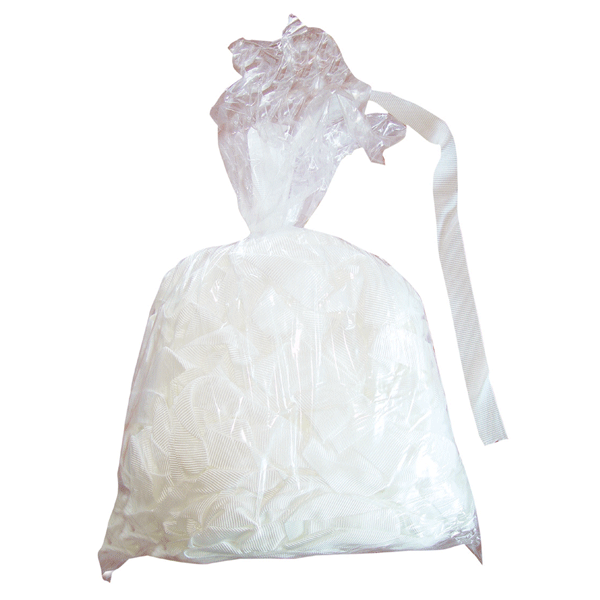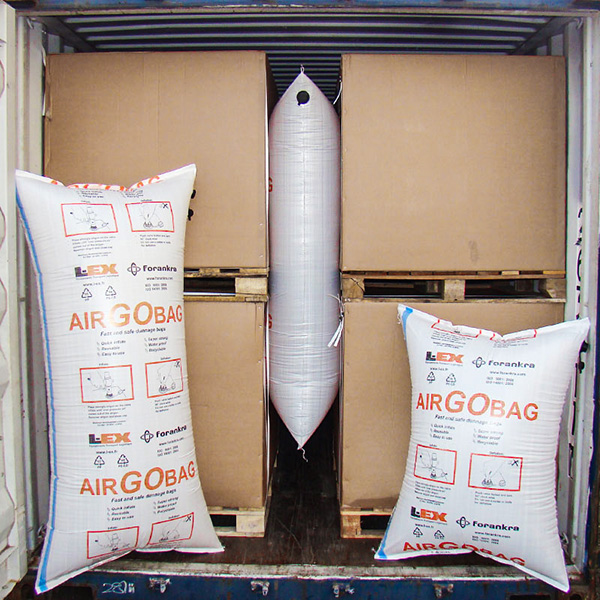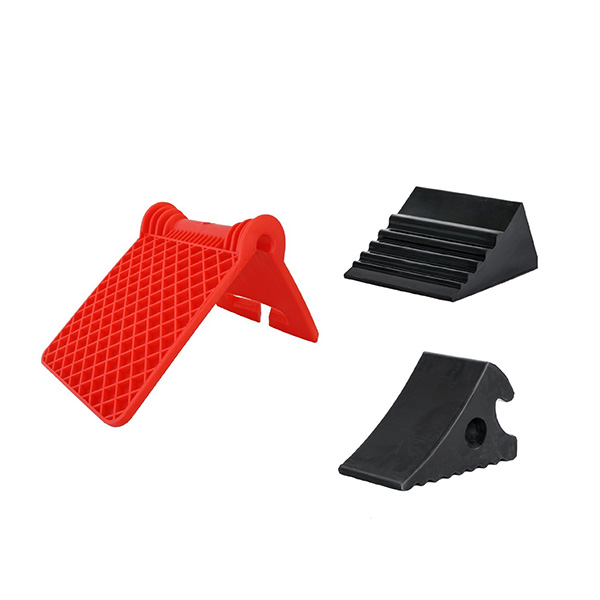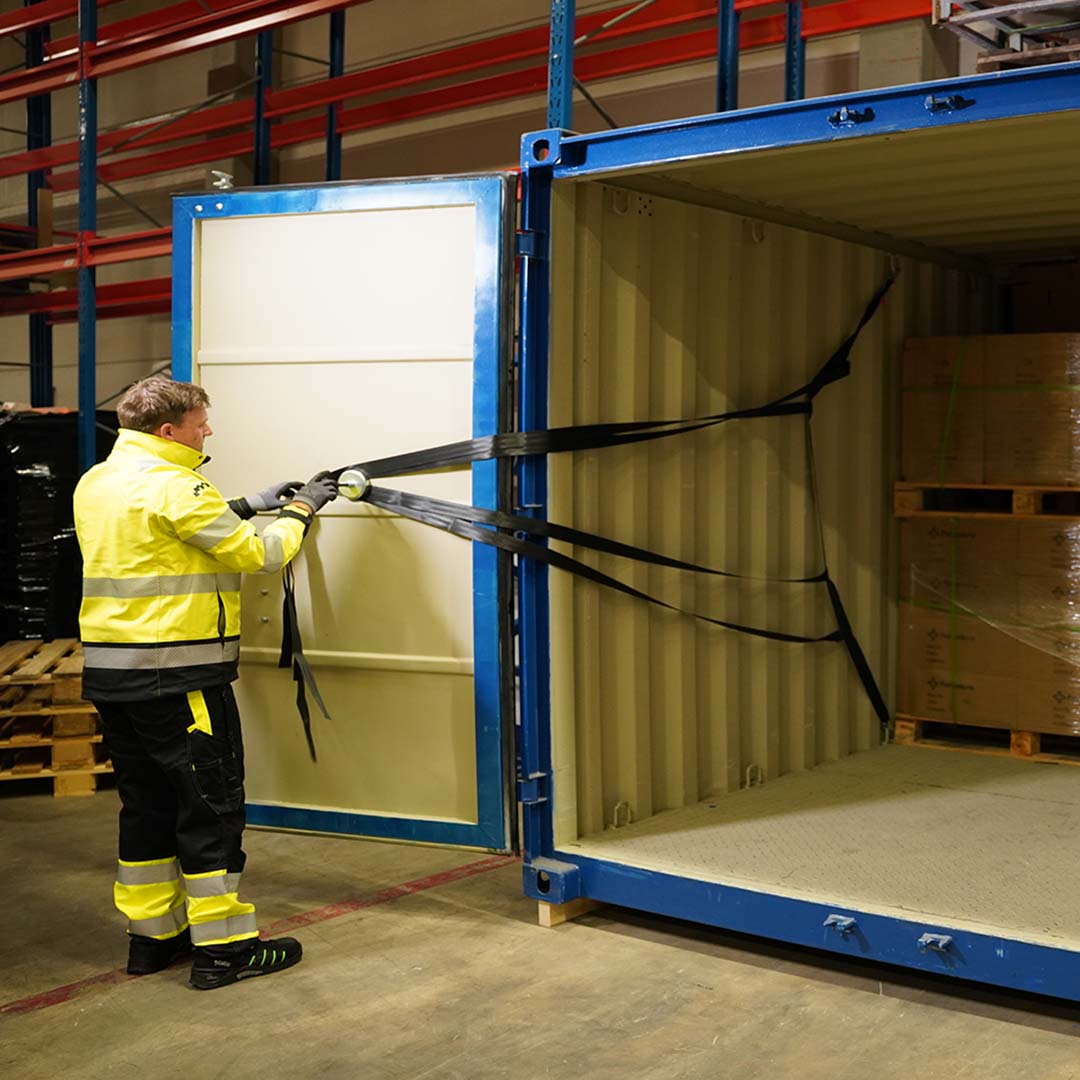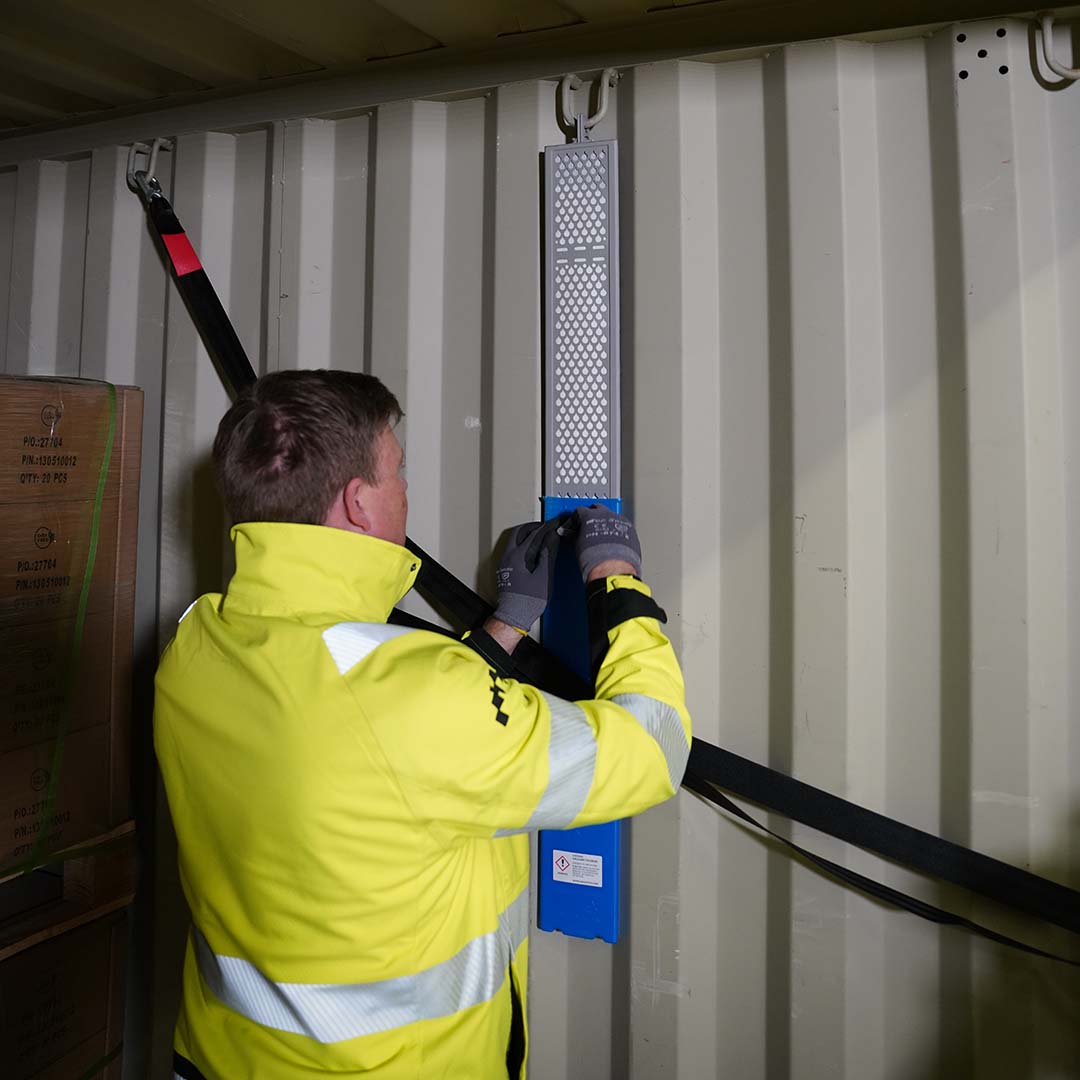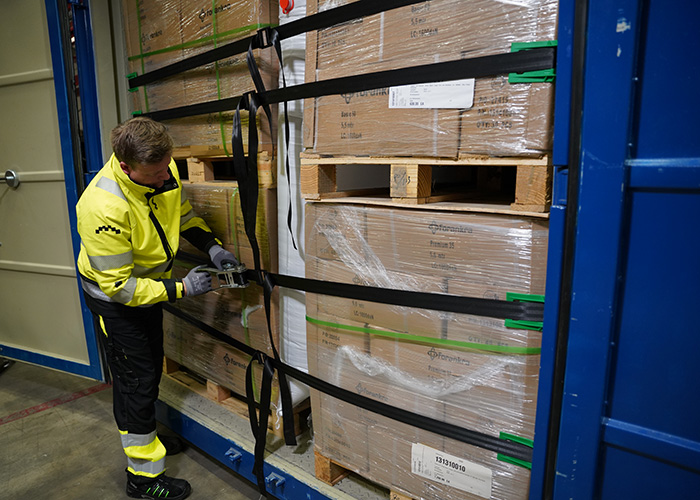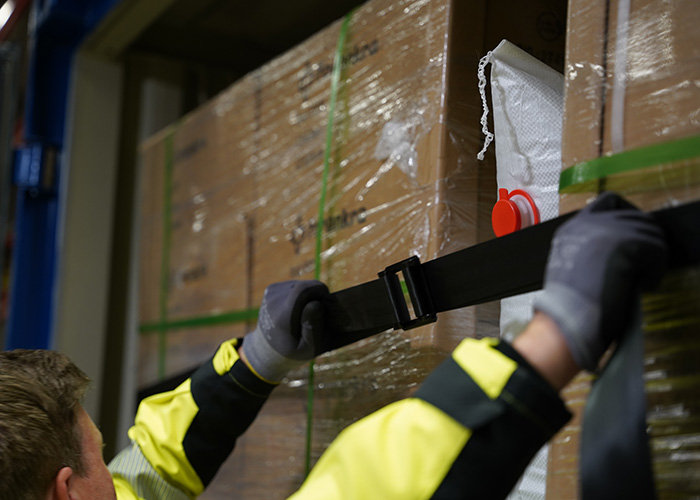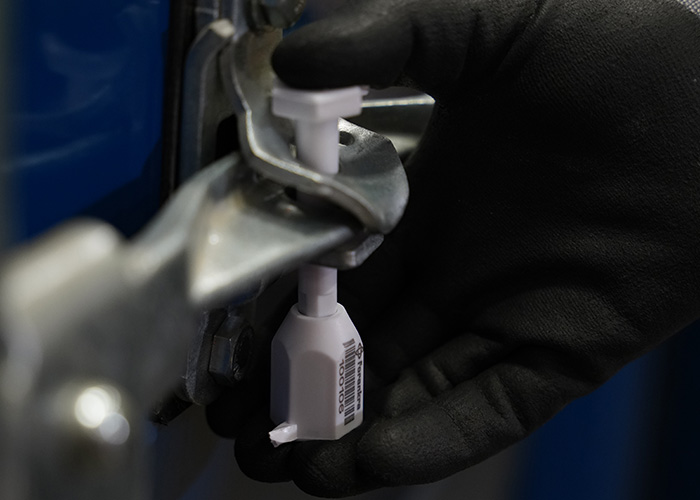Cargo securing in container – One Way Securing
Containers are increasingly being used as cargo carriers for sea freight. There is less risk of cargo moving about in a container because it can be blocked against the rigid walls of the container. If cargo moves about it can cause damage to the goods, and in the worst case lead to a chain reaction that puts both the ship and its crew at risk. Goods that have shifted can also cause serious injury during unloading if they fall out when the doors are opened.
In addition to forces due to the weight of cargo, another major problem is moisture, which can cause rust, mould and damage to packagings. A full 10 percent of all transit damage in containers is moisture-related.
Insurance companies and inspection authorities estimate that the cargo in at least half of all containers is inadequately secured. The value of related cargo damage is estimated at a massive 500 billion USD annually. Why should this be the case when adequate cargo securing is such a profitable investment and a cheap precaution? Poor knowledge is probably the main problem, but another reason is that many take a narrow view of the costs of stowage and lashing, instead of seeing them from a wider perspective. Sooner or later, costs will arise somewhere else.
Forankra has long experience of cargo securing in containers and offers a wide range of products for all cargo securing applications. Our solutions meet CTU Code and AAR regulations. Forankra also represents Cordstrap in Sweden and their unique solutions for cargo securing in containers. These solutions also make work easier, faster and more efficient.
One Way Securing (OWS)
The most common cargo securing methods in containers are lashing and blocking. Products used for cargo securing in containers are included in the concept of One Way Securing (OWS). One Way Securing is a combination of several different products which together create the required cargo securing solution in a container. In addition to one way webbing and one way buckles, products like dunnage bags, towingstraps, desiccants, corner protections and friction material are included in the concept. Accessories for containers include LS magnets for straps, bolt seals and safety straps for containers.
When securing cargo in containers it is importat that the goods must be stowed correctly and that the cargo securing material must be chosen and used in the correct way. Feel free to contact Forankra for advice and recommendations.
Recommended products for cargo securing in containers:
There is a lot to consider when
Securing cargo in containers.
If you want to know more - watch our film.
Regulations for cargo securing in containers
Various regulations exist for securing cargo in containers, depending on the mode of transport, see table.
If intermodal transport is used, the regulations for each transport mode must be followed. The main regulation is the "CTU code of practice" issued by the IMO. Special regulations govern the transport of hazardous goods. For more detailed information, we refer to Mariterm.
Read more about Regulations for Maritime transports.

Practical advice for cargo securing in containers
Remember:
• Always check which cargo securing options are available in the container.
• A lashing point in the floor of a container must be able to support a load of one tonne, while an upper lashing point must be able to support 0.5 tonne (if fittings are present). This means that the fittings are weaker than normal on a truck.
• When securing cargo of heavy loads in containers (up to 30 ton) the problem with weak lashing points can be reduced by using CornerLash on the strongest point of the container – the corner posts.
• If, for example, you have plastic pallets in the container, friction mats can be used to simplify the cargo securing.
Tips before loading
Use magnets to attach straps to the inside of the container before starting to load, to avoid tangles.
By using desiccants, the relative humidity can be reduced in the container and the goods can thereby be protected from moisture damage in connection with the transport.

Reduce unwanted void
Dunnage bags are used to fill unwanted voids in a cargo space – between goods or between goods and the walls of the cargo carrier.
When a dunnage bag of the correct size has been placed in the desired place in the cargo area, it can be filled with air.
The dunnage bag can thereafter absorb shocks and vibrations and prevent the cargo from moving on the cargo carrier.
Towing strap is a tipping protection, which is used for cargo securing in containers.
When the container is ready for transport and closed, it can be sealed with a bolt seal.
To prevent the doors from flying open when the container is opened, a container security strap can be attached to the doors before opening.

One Way Securing consists of a combination of products (e.g. one way webbings, dunnage bags, towing straps, edge protection), which together create the desired one way cargo securing in containers.
CornerLash is a corner element specially developed for cargo securing of heavy goods in containers (up to 30 tons). CornerLash is used together with one way webbings and buckles.
For your information
With Forankra as partner, you can be sure that the products are manufactured in accordance to current legislation and standards.
Our experts are available for questions and advice as well as for recommendations of solutions adapted to your needs.
Our services
Forankra offers several services in cargo securing for containers / One Way Securing:
• Training in cargo securing
• Counseling
• Customized products and solutions
• Regulations and documentation


